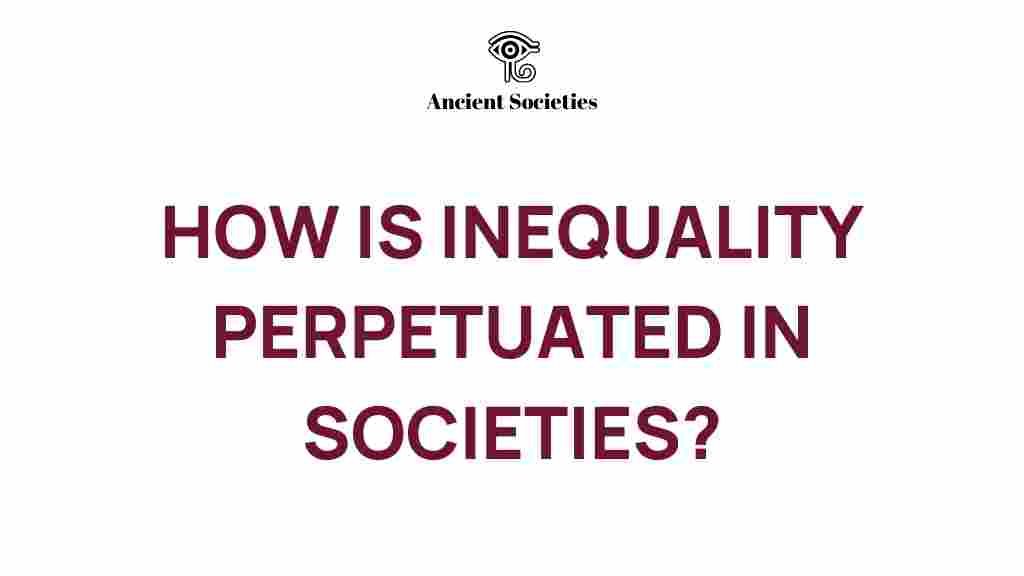Inequality: Unraveling the Threads of Disparity
Inequality is a multifaceted issue that permeates various aspects of society, influencing everything from access to education and healthcare to economic opportunities and social mobility. Understanding the roots of inequality requires examining the complex interplay of historical context, societal structures, and systemic barriers that sustain disparities. This article will delve into how privilege and access to resources contribute to social disparity, particularly affecting marginalized communities.
The Historical Context of Inequality
To fully grasp the phenomenon of inequality, it is essential to consider its historical context. Throughout history, certain groups have systematically benefited from social and economic structures while others have been marginalized. This historical backdrop has laid the groundwork for contemporary disparities.
- Colonialism: The legacy of colonialism is a significant factor in understanding current inequalities. Colonized nations often faced exploitation, which disrupted their social structures and economies.
- Slavery: The transatlantic slave trade created deep-rooted racial disparities that persist today. The repercussions of slavery continue to affect the socioeconomic status of African American communities.
- Gender Discrimination: Women’s rights movements have fought against systemic barriers, yet disparities in income, education, and representation persist.
These historical factors contribute to a present-day economic divide, making it crucial to recognize how the past shapes the current landscape of inequality.
Understanding Systemic Barriers
Systemic barriers are obstacles embedded within societal structures that perpetuate inequality. These barriers manifest in various ways, often making it difficult for marginalized communities to access essential resources.
- Education: Access to quality education is often determined by socioeconomic status and geographic location. Schools in affluent areas receive more funding, while those in low-income neighborhoods struggle.
- Healthcare: Disparities in healthcare access lead to significant differences in health outcomes. Marginalized communities often face barriers to receiving adequate medical care.
- Employment Opportunities: Discrimination in hiring practices and workplace environments can hinder economic advancement for certain groups.
These systemic barriers create a cycle of disadvantage, reinforcing the existing social disparity.
The Role of Privilege in Sustaining Inequality
Privilege plays a crucial role in the perpetuation of inequality. It refers to the unearned advantages held by individuals based on their social identities, such as race, gender, or socioeconomic status. Understanding privilege is essential to addressing the economic divide.
- White Privilege: In many societies, white individuals may have advantages in areas such as education, employment, and law enforcement interactions.
- Male Privilege: Gender norms often afford men preferential treatment in workplaces and leadership roles, contributing to economic disparities.
- Class Privilege: Those born into affluent families often have easier access to resources like education and networking opportunities.
Acknowledging privilege is a vital step toward dismantling the structures that maintain inequality.
Access to Resources: A Key Component of Inequality
Access to vital resources is a fundamental factor in understanding inequality. Without equal access, marginalized communities face insurmountable challenges that hinder their ability to thrive.
- Financial Resources: Wealth accumulation is often restricted for marginalized groups due to historical and systemic barriers, limiting their ability to invest in education, property, and businesses.
- Social Networks: Access to influential networks can open doors to opportunities that may not be available to those from less privileged backgrounds.
- Information and Technology: In the digital age, access to technology and information is crucial. Disparities in internet access can hinder educational and job opportunities.
Addressing these access issues is essential in bridging the gap of social disparity.
Step-by-Step Process to Address Inequality
While the issue of inequality may seem daunting, there are actionable steps that individuals, communities, and governments can take to address systemic barriers and promote equity.
- Education and Awareness: Educate yourself and others about the roots of inequality, privilege, and systemic barriers. Awareness is the first step toward change.
- Advocacy: Support policies that promote equity and inclusion. Engage in advocacy efforts to address systemic barriers in education, healthcare, and employment.
- Community Engagement: Collaborate with marginalized communities to understand their needs and work towards solutions that empower them.
- Support Local Initiatives: Invest in local businesses and initiatives that support marginalized communities, helping to create economic opportunities.
- Promote Diversity and Inclusion: In workplaces and organizations, prioritize diversity and inclusion to ensure equitable representation and opportunities for all.
By taking these steps, we can work towards dismantling the structures that sustain inequality.
Troubleshooting Tips for Addressing Inequality
While efforts to combat inequality are vital, challenges may arise. Here are some tips for overcoming common obstacles:
- Resistance to Change: Expect pushback when advocating for equity. Stay committed to your cause and provide evidence-based arguments to support your position.
- Lack of Resources: Collaborate with other organizations and community groups to pool resources and maximize impact.
- Misunderstanding of Privilege: Encourage open discussions about privilege and its effects, fostering an environment where individuals can learn without defensiveness.
By being prepared for these challenges, advocates for equality can remain resilient in their efforts.
Conclusion: Moving Toward an Equitable Future
Inequality is a deeply entrenched issue that requires a multifaceted approach to address. By understanding the historical context, recognizing systemic barriers, and acknowledging privilege, we can begin to unravel the threads of disparity that bind our societies. Access to resources must be equitable, and efforts should be made to empower marginalized communities.
As individuals and communities come together to advocate for change, we can work towards a future where social disparity is significantly reduced. To learn more about initiatives aimed at addressing inequality, visit this resource. For additional information on societal structures and their impact on inequality, see this article.
By embracing these principles and taking action, we can create a more just society for all.
This article is in the category Society and created by AncientSocieties Team
